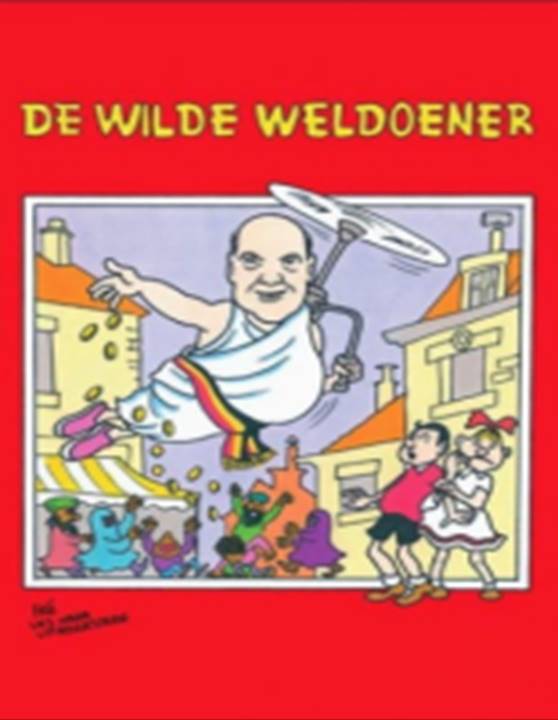Note 1 A full list of the individuals said to have collaborated was provided by Brandsmiths in a letter dated 14 June 2021. [Back]
Note 2 Published as ‘The Bible of Peckham –  Volumes
Volumes 1-3’ by BBC books (1999). [Back]
1-3’ by BBC books (1999). [Back]
Note 3 The footnote cites Francis Day and Hunter Ltd  v
v Twentieth Century Fox Corp Ltd [1940] AC 112 at 123. The general rule “does not mean that in particular cases a title may not be on so extensive a scale, and so important in character, as to be the proper subject of protection against being copied” (citing Dick
Twentieth Century Fox Corp Ltd [1940] AC 112 at 123. The general rule “does not mean that in particular cases a title may not be on so extensive a scale, and so important in character, as to be the proper subject of protection against being copied” (citing Dick  v
v Yates (1881) L.R. 18 Ch D. 76) and Ladbroke (Football) Ltd
Yates (1881) L.R. 18 Ch D. 76) and Ladbroke (Football) Ltd  v
v William Hill (Football) Ltd [1964] 1 W.L.R. 273 (at 286, per Lord Hodson, saying that Dick
William Hill (Football) Ltd [1964] 1 W.L.R. 273 (at 286, per Lord Hodson, saying that Dick  v
v Yates and “do not support the proposition that, as a matter of law, copyright cannot subsist in titles. No doubt they will not as a rule be protected, since alone they would not be regarded as a sufficiently substantial part of the book or other copyright document to justify the preventing of copying by others” [Back]
Yates and “do not support the proposition that, as a matter of law, copyright cannot subsist in titles. No doubt they will not as a rule be protected, since alone they would not be regarded as a sufficiently substantial part of the book or other copyright document to justify the preventing of copying by others” [Back]
Note 4 In particular, Infopaq International, C�5/08, EU:C:2009:465, paragraphs 37 and 39, and Levola Hengelo, C�310/17, EU:C:2018:899, paragraphs 33 and 35 to 37. [Back]
Note 5 Painer, C�145/10, EU:C:2011:798, paragraphs 88, 89 and 94 and Renckhoff, C�161/17, paragraph 14. [Back]
Note 6 Clark,  Only
Only
 Fools
Fools and Horses, The Official Inside Story (2011) p. 15. [Back]
and Horses, The Official Inside Story (2011) p. 15. [Back]
Note 7 Clark,  Only
Only
 Fools
Fools and Horses, The Official Inside Story (2011) p. 15. [Back]
and Horses, The Official Inside Story (2011) p. 15. [Back]
Note 8 Part of the back story was that Rodney and Del’s father had deserted them shortly after their mother passed away when Rodney was six, leaving Del to bring him up. [Back]
Note 9 Clark,  Only
Only
 Fools
Fools and Horses, The Official Inside Story (2011) p. 15. [Back]
and Horses, The Official Inside Story (2011) p. 15. [Back]
Note 10 Clark,  Only
Only
 Fools
Fools and Horses, The Official Inside Story (2011) p. 15 [Back]
and Horses, The Official Inside Story (2011) p. 15 [Back]
Note 11 A fictional character in a comic series. [Back]
Note 12 “It follows that the less developed the characters, the less they can be copyrighted; that is the penalty an author must bear for marking them too indistinctly” [Back]
Note 13 p.13. [Back]
Note 14 “Although there must be a causal connection between the claimant’s and the defendant’s work for there to be any infringement, this connection need not be direct. … Even though copying may take place indirectly, it is still necessary to prove an unbroken chain between the claimant’s and the defendant’s work. It must therefore be shown that the intermediate copy is itself either a direct or an indirect copy of the copyright work” [Back]
Note 15 The editor of The Oxford Book of Parodies says “A parody is no longer worthy of the name, however, if it loses sight of its target”. Introduction p. xiii [Back]
Note 16 Jacques, The Parody Exception in Copyright Law (Oxford, 2019) p.11. [Back]
Note 17 “High above me in the air, the seagull continued upon its  vacuous
vacuous and erratic journey through a sky still glowering in fury at the ceaseless intrusion of the crazed sun”. [Back]
and erratic journey through a sky still glowering in fury at the ceaseless intrusion of the crazed sun”. [Back]
Note 18 https://www.youtube.com/watch? v=iVb5EBSNKTw
v=iVb5EBSNKTw [Back]
[Back]
Note 19 https://www.youtube.com/watch? v=6oVG4_k7Hbc
v=6oVG4_k7Hbc [Back]
[Back]
Note 20 Another example is the comedian John Thompson who, as Bernard Righton, critically parodies the comedian Bernard Manning: https://www.youtube.com/watch? v=BxFqv1QDI3Q [Back]
v=BxFqv1QDI3Q [Back]





